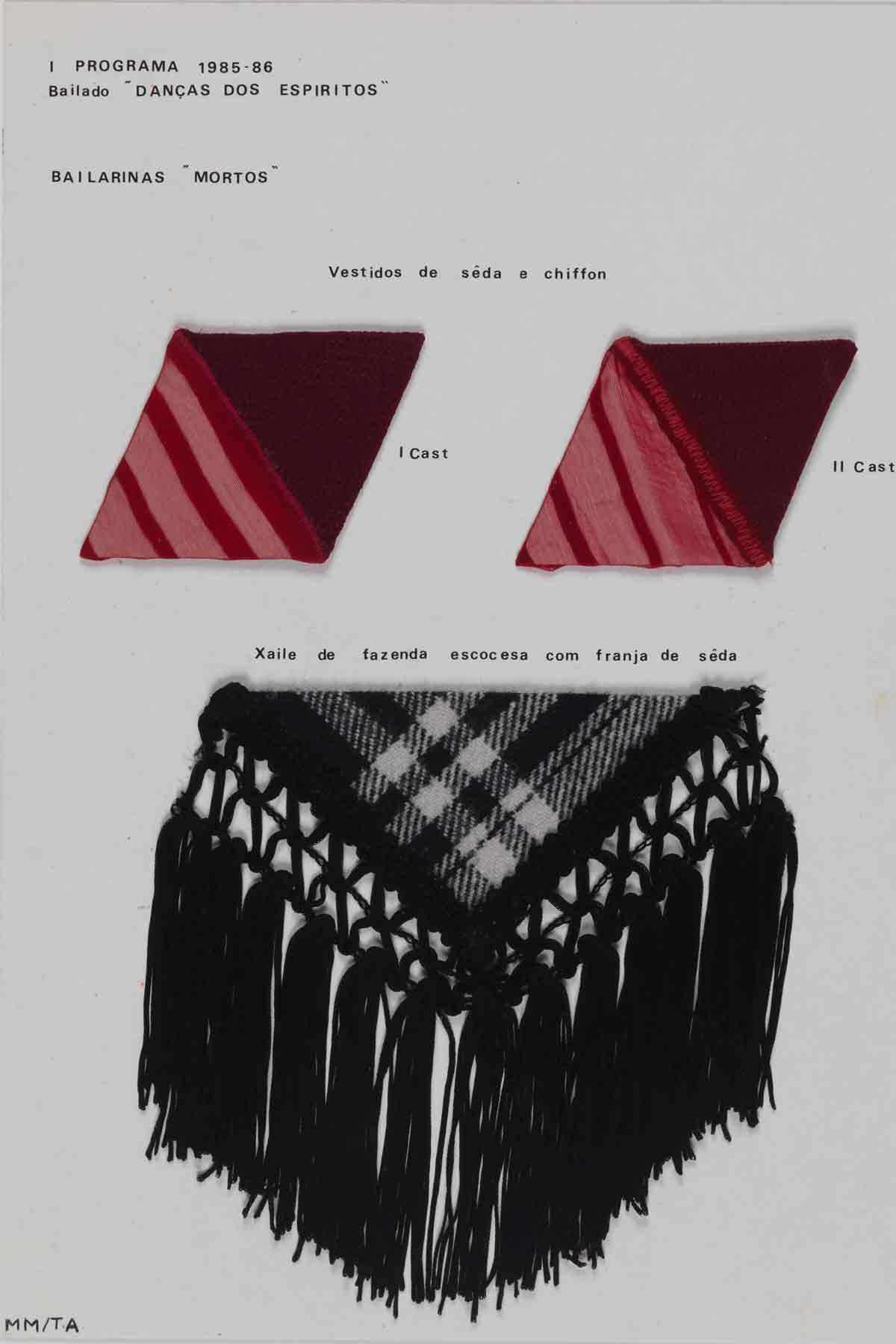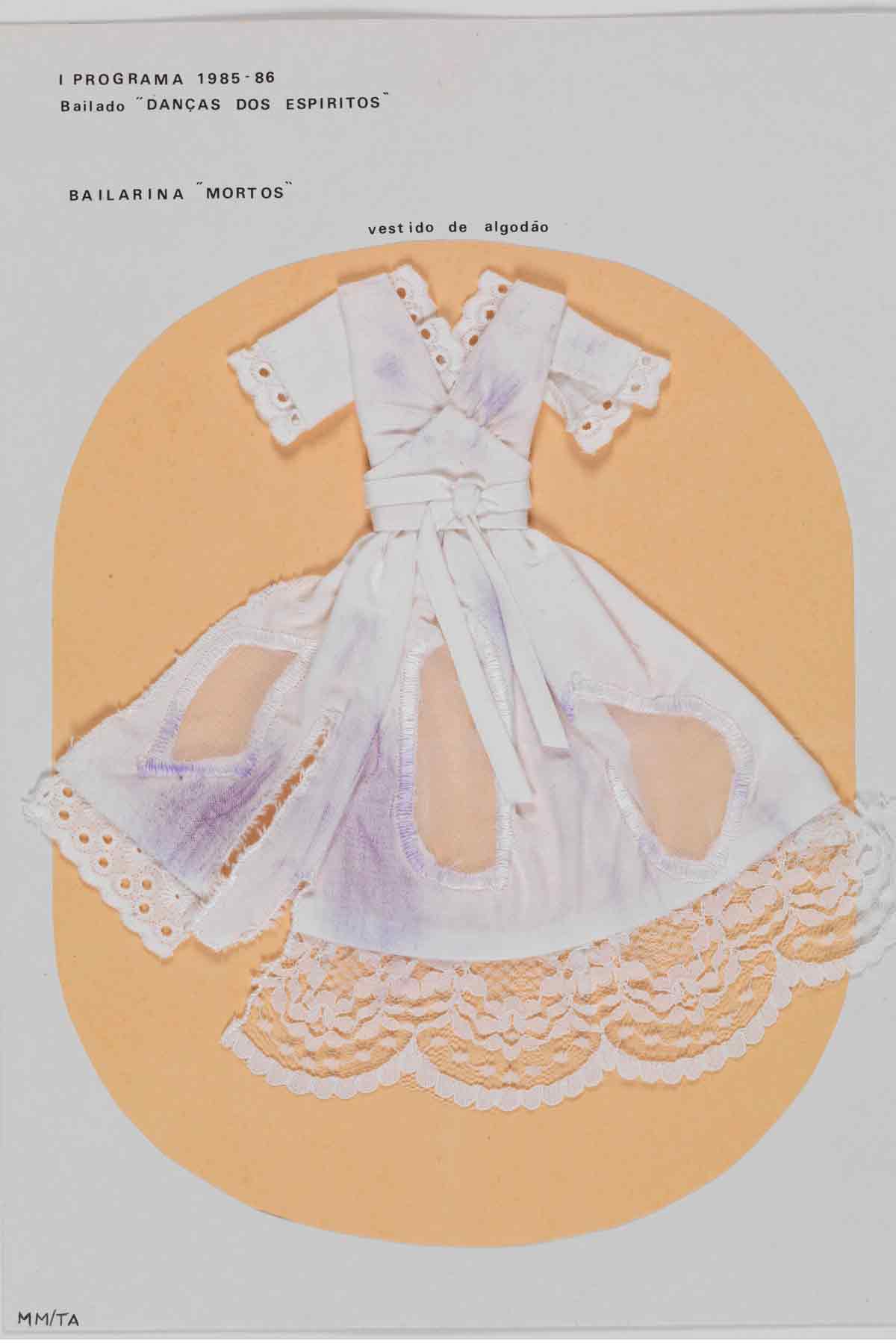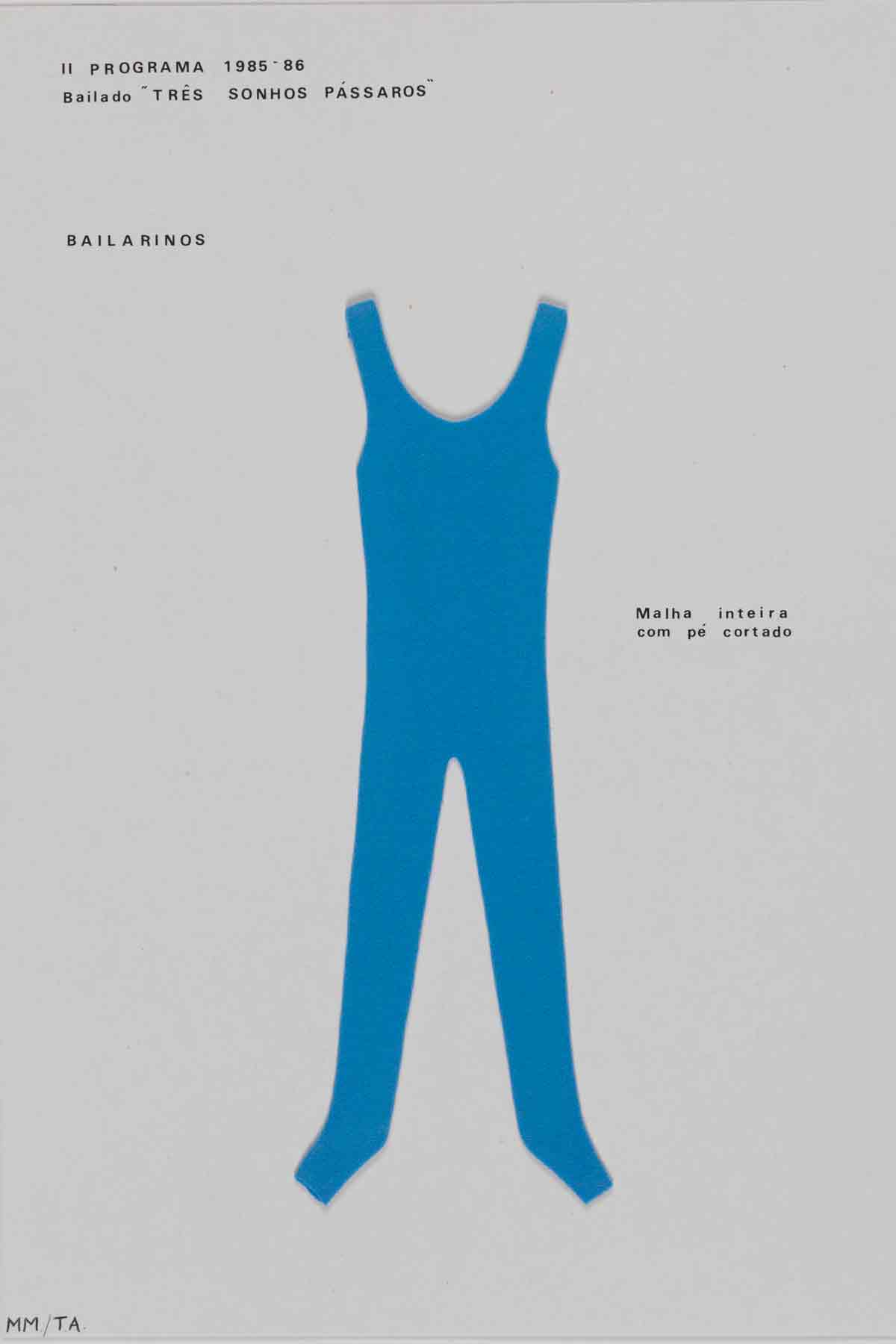Costumes of the Gulbenkian Ballet
This inventory was kept over the forty years of the history of the Gulbenkian Ballet (1965-2005) by the person in charge of the store adjoining the wardrobe department. Although drawn up using different systems and methods, and with varying degrees of complexity and sophistication, this information resource was intended essentially to help with supervising and managing wardrobe tasks, from cutting and sewing through to conservation and maintenance.




The process of putting together the wardrobe for a production started with the costume designs, which were submitted to the production managers and to the head of the costume atelier.




In the 1980s and 1990s, the head of the atelier led a staff of twelve costumiers. In exceptional cases, additional costumiers were hired temporarily to work on larger wardrobe projects.
After a visit to the internal stores, to check on the fabrics and trimmings in stock, samples of the other materials needed were obtained from external suppliers.




The head of costume atelier was responsible for keeping records of dancers’ measurements. Based on these and depending on the number of dancers (some dance works had two casts), calculations were made of the quantities needed and the materials were ordered.
Sometimes, when specified by the costume designers, orders were placed with specific firms outside Portugal. Shoes and slippers were ordered from British suppliers, and Foundation UK Branch would sometimes act as intermediary.
The work of creating costumes started with making mock-ups, and then cutting the fabric, tasks which fell to the head of the costume atelier. Fittings were scheduled with the rehearsal director. The whole process was followed through by the costume designer, and in some cases, designs underwent radical changes.




Once sewn and finished, the pieces were delivered to the wardrobe store, and would be worn for the first time at the dress rehearsal.



As well as keeping an inventory, the store manager was also responsible for wardrobe management. This entailed stowing costumes by choreographical work, identifying each piece with tag indicating the name of the work, the choreographer, and the season, marking each piece and the accessories with the dancer’s name, cleaning and assessing the costumes’ state of repair, and keeping records of donations and loans to other organisations.
As a rule, the store manager joined the Company on tour, both within Portugal and abroad.



When the Gulbenkian Ballet was closed down (2005), most of the wardrobe and certain other pieces were donated to their respective designers or to performing arts institutions, such as Chapitô, Escola Superior de Cinema e Teatro, Museu do Traje, Guarda-roupa Maria Gonzaga. However, the Foundation kept back some of the costumes for future archival interest.
We are grateful to Deodata Saião (head of the store adjoining the wardrobe department from 1984 to 2005) and Isabel Ayres (Production Director, Gulbenkian Ballet from 1989 to 2005) for the information they contributed for this text.
From the Archives
Significant moments in the history of Calouste Gulbenkian and the Gulbenkian Foundation in Portugal and around the world.

